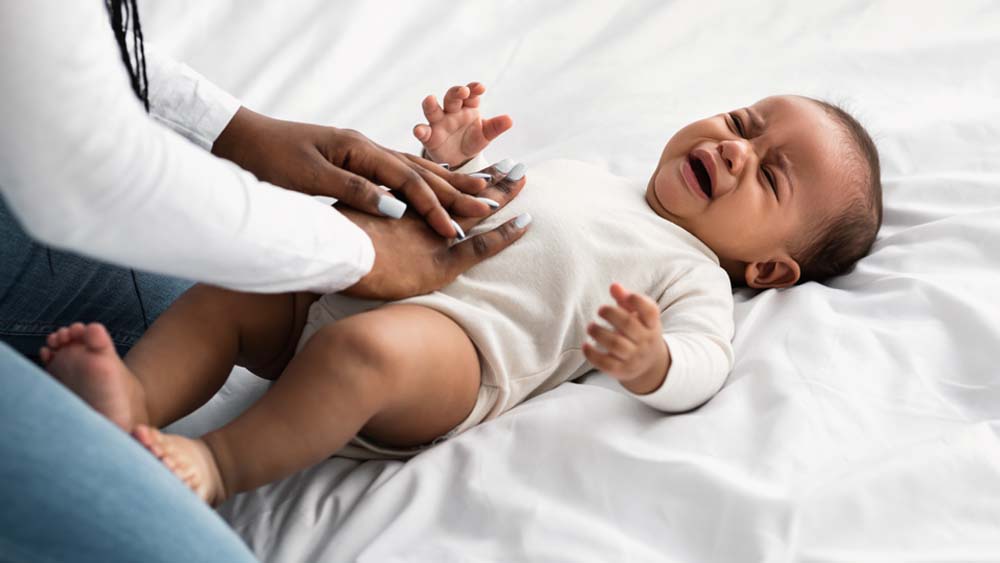Newborns and infants commonly experience gas and tummy troubles due to their developing digestive systems. Parents eager to ease their baby's discomfort may come across gripe water as a recommended remedy from paediatricians. But what exactly is gripe water, how effective is it, and is it safe for your little one? Here’s everything you need to know about using gripe water for newborns and how it compares to other gas relief options.
What is Gripe Water?
Gripe water is an over-the-counter liquid supplement that typically contains sodium bicarbonate and a blend of herbs such as fennel, ginger, chamomile, dill, lemon balm, or peppermint. It is marketed as a remedy for gas, stomach discomfort, teething pain, hiccups, and even colic. While many parents swear by gripe water, scientific evidence supporting its effectiveness remains limited. Some experts believe the sweet taste of gripe water may help calm babies, while others suggest that ingredients like fennel and ginger aid digestion and alleviate gas.
It is important to note that gripe water differs from baby gas drops, which contain simethicone—an anti-foaming agent that breaks up gas bubbles. Like gripe water, gas drops are not conclusively proven to work but are generally considered safe by the American Academy of Paediatrics (AAP).
How Does Gripe Water Work?
Originally developed in the 1850s in England, gripe water once contained alcohol, which was believed to relax babies. Modern gripe water formulations are alcohol-free and may contain herbs known for their digestive benefits. While the exact mechanism is unclear, some believe that fennel, dill, and ginger help reduce gas and soothe stomach discomfort.
Before giving gripe water to your baby, consult your paediatrician to ensure it is safe and appropriate. If approved, it should be used as a secondary option when other gas relief methods—such as tummy massages, tummy time, or leg bicycling—are not effective. Since gripe water is not regulated by the Food & Drug Administration (FDA), choosing a reputable brand is crucial. Paediatricians typically advise limiting use to four doses a day and discontinuing gripe water by the time your baby is 4 to 6 months old, when digestive issues often resolve naturally.
Are There Side Effects of Gripe Water?
Some parents report that their babies appear drowsy after taking gripe water. However, this is likely due to exhaustion from prolonged fussiness rather than an actual sleep-inducing effect. Potential allergic reactions are rare but should be monitored. Symptoms such as hives, itchiness, watery eyes, vomiting, or diarrhoea warrant a call to your doctor. Severe reactions, including swelling of the lips or difficulty breathing, require immediate medical attention.
Is Gripe Water Safe for Newborns?
The safety of gripe water depends on the specific brand and its ingredients. Always consult your paediatrician before introducing gripe water to your baby. Formulations containing alcohol, artificial sweeteners, or untested ingredients should be avoided. Additionally, gripe water with sucrose may not be ideal, as sugar can negatively impact developing gums and teeth and encourage a preference for sweet solutions.
Even if gripe water is deemed safe, it should never be used in large quantities or as a substitute for breast milk or formula, which should remain the primary source of nutrition.
How to Administer Gripe Water Safely
If your paediatrician approves a specific gripe water, follow these guidelines:
- Check the ingredients: Avoid products with vegetable carbon (carbo vegetables), alcohol, or sucrose. opt for brands manufactured in the U.S.
- Read the instructions: Different brands have varying guidelines regarding dosage and age recommendations. Some advice waiting until your baby is at least one month old.
- Follow paediatrician guidance: Consult your doctor on the appropriate dosage and frequency before giving gripe water to your baby.
Alternatives to Gripe Water
If you prefer not to use gripe water, there are other methods to relieve your baby’s gas and discomfort:
- Try Antigas Drops – Simethicone-based drops may help break up gas bubbles. Common brands include Mylicon and Little Remedies. Consult your paediatrician for recommendations.
- Check the Formula – Switching to a ready-to-feed or concentrated formula instead of powder can reduce air bubbles. Allow powder formula to settle before feeding. If dairy sensitivity is suspected, consult your doctor before switching formulas.
- Adjust Feeding Techniques – Tilt the bottle to ensure the nipple is filled with milk, reducing the amount of swallowed air. Consider using anti-colic bottles or a more flexible nipple to minimize gas intake.
- Massage and Leg Movements – Gently rubbing your baby’s belly or bicycling their legs can help release trapped gas.
- Swaddle and Rocking – Wrapping your baby snugly and rocking them can provide comfort and relaxation.
- Tummy Time – Lying your baby on their stomach while awake may help expel gas while strengthening neck and shoulder muscles.
- Soothing Sounds – Singing, humming, or using white noise (e.g., a fan or vacuum cleaner) can calm a fussy baby.
- Dietary Adjustments for Breastfeeding Moms – Eliminating dairy, soy, or caffeine from your diet might help if your baby is sensitive to certain foods. Consult your doctor before making dietary changes.
- Probiotic Drops – Some research suggests that probiotics might aid digestion and reduce colic symptoms, though studies are inconclusive. Ask your paediatrician if this is an option worth exploring.
Final Thoughts
Gripe water is a popular remedy for relieving gas and tummy troubles in babies, but its effectiveness remains debated. Always seek paediatrician approval before use and explore alternative methods to ease your baby’s discomfort. Whether you choose gripe water, gas drops, or other natural techniques, patience and gentle care will help your little one feel better over time.

